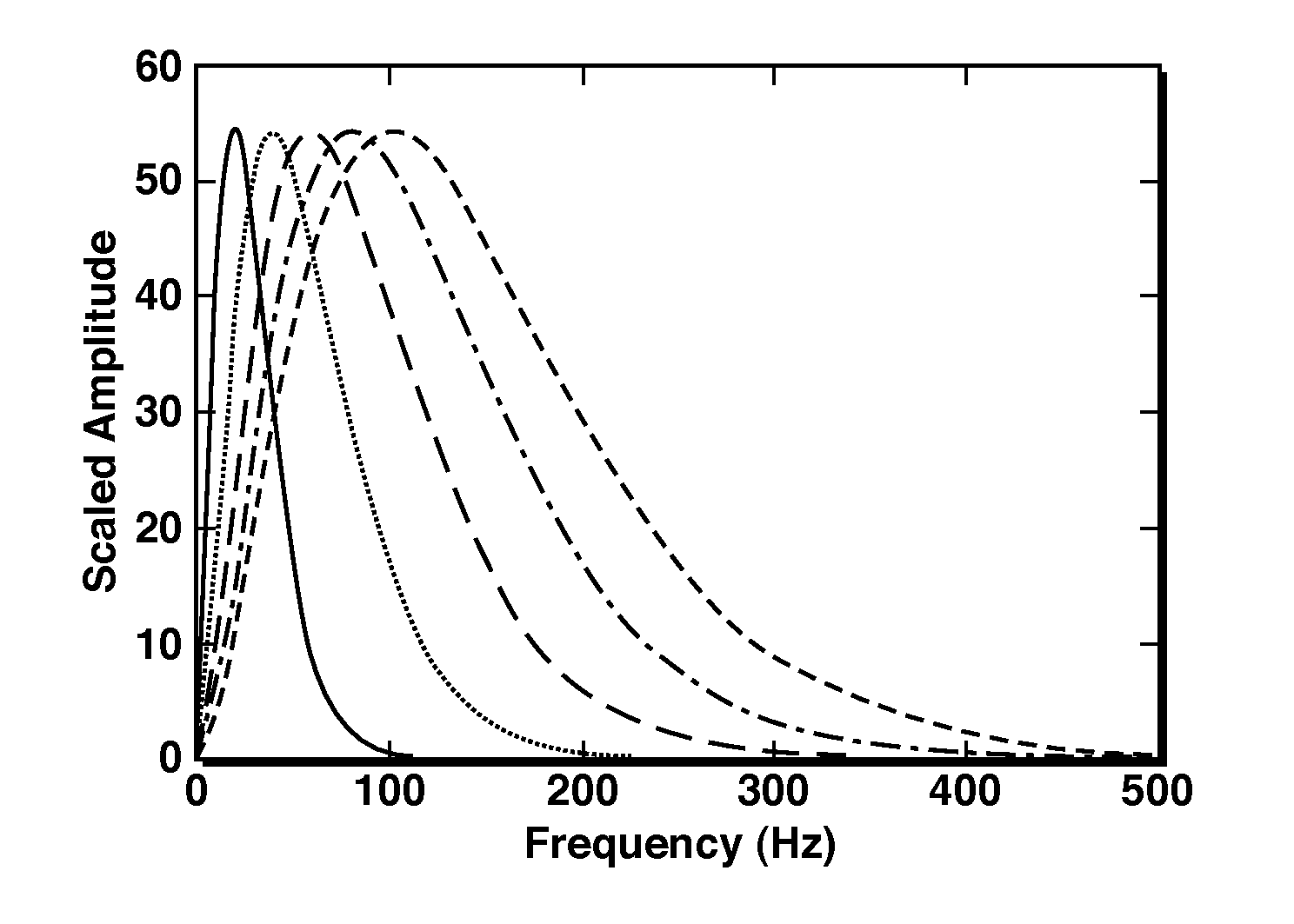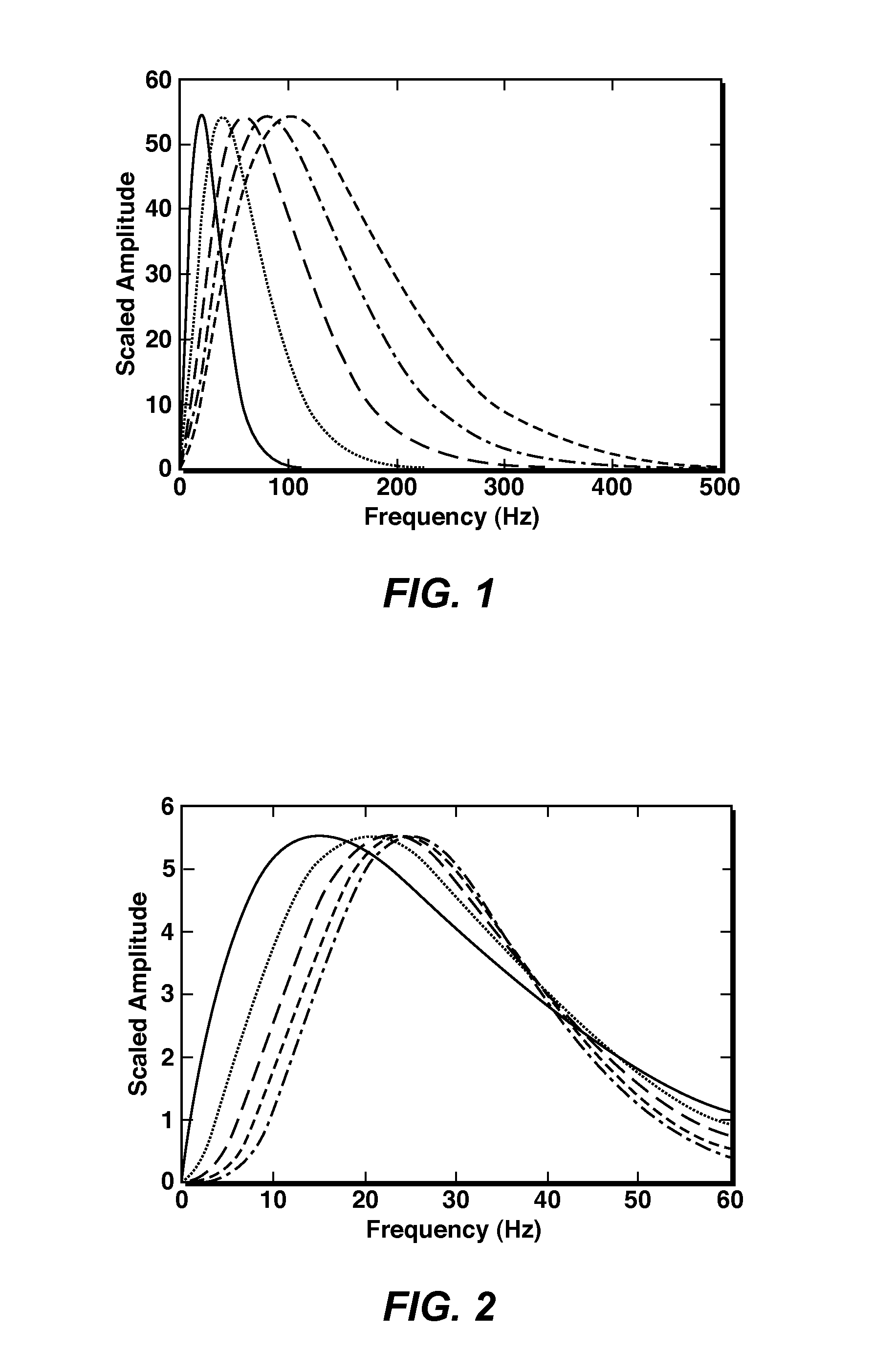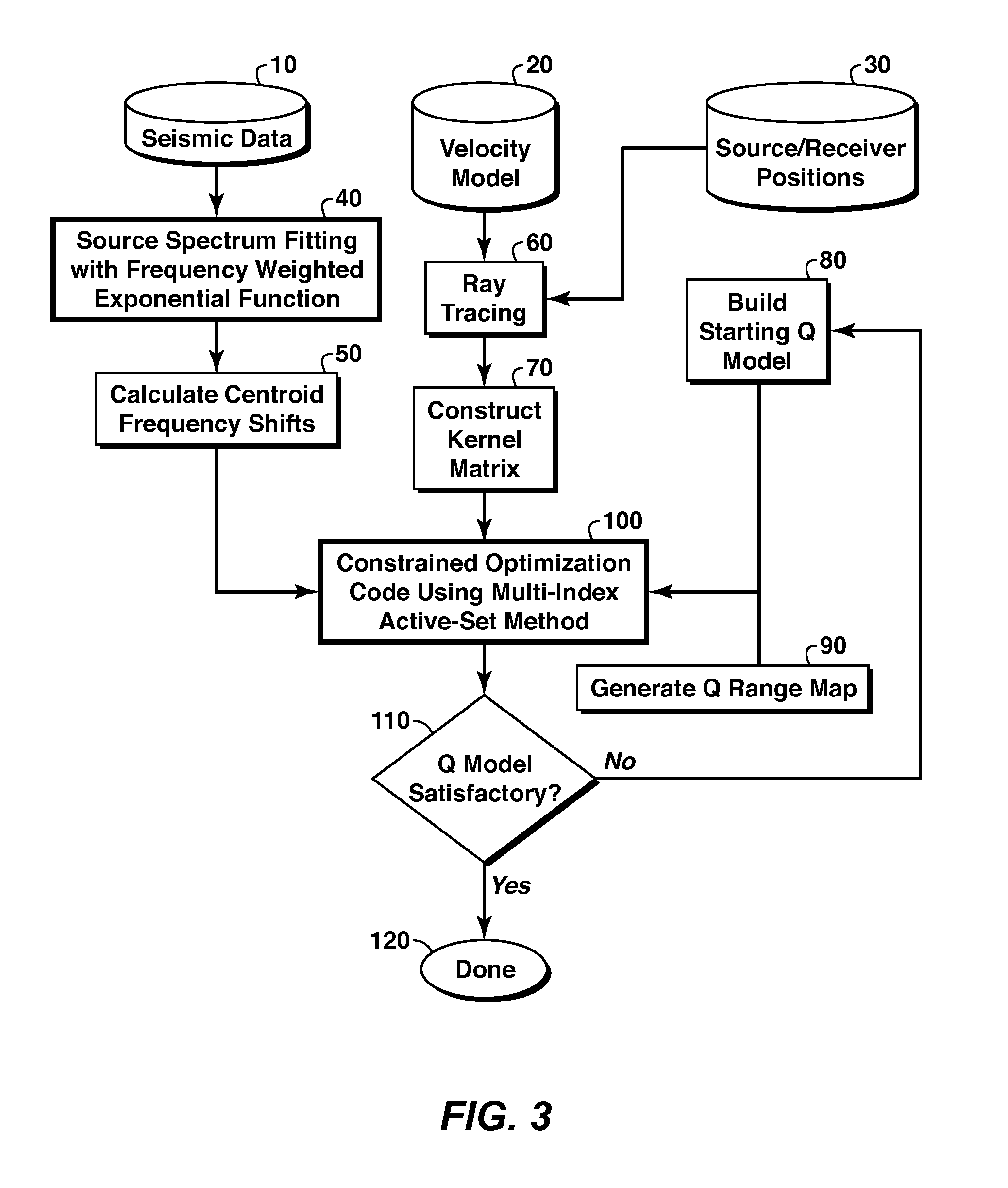Q Tomography Method
a tomography and wave-equation technology, applied in the field of seismic data processing and q tomography, can solve the problems of inability to meet the requirements of 3d cases, inability to meet the requirements of minimum approximations and maximum flexibility, and significant errors
- Summary
- Abstract
- Description
- Claims
- Application Information
AI Technical Summary
Benefits of technology
Problems solved by technology
Method used
Image
Examples
examples
[0063]In this section, a synthetic example of Q tomography is presented. The performance of the Q tomography algorithm of the present invention is compared with that of the conventional centroid frequency shift Q tomography algorithms using the Gaussian function with or without the box constraints. FIG. 4 shows the source amplitude spectrum, which is asymmetric. The centroid frequency of the source amplitude spectrum can be calculated numerically as 55.7 Hz and the peak frequency is 33 Hz. With the Gaussian function source amplitude spectrum fitting, the peak frequency of the Gaussian function is 55.7 Hz and the variance is 1246 Hz2. With the frequency weighted exponential function fitting, the parameters n and f0 in equation (3) are 1.45 and 22.7 Hz respectively. FIG. 5A is the velocity model and the raypaths obtained by running the ray tracing code, while FIG. 5B is the true 1 / Q model. In this synthetic data testing, 50 sources are used. For each source, there are 90 receivers. Th...
PUM
 Login to View More
Login to View More Abstract
Description
Claims
Application Information
 Login to View More
Login to View More - R&D
- Intellectual Property
- Life Sciences
- Materials
- Tech Scout
- Unparalleled Data Quality
- Higher Quality Content
- 60% Fewer Hallucinations
Browse by: Latest US Patents, China's latest patents, Technical Efficacy Thesaurus, Application Domain, Technology Topic, Popular Technical Reports.
© 2025 PatSnap. All rights reserved.Legal|Privacy policy|Modern Slavery Act Transparency Statement|Sitemap|About US| Contact US: help@patsnap.com



